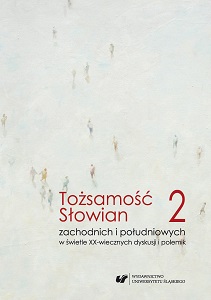Slavenska i slovenska dvojina – nekad i danas
Slavic and Slovene Dual – Then and Now
Author(s): Arno Wonisch
Subject(s): South Slavic Languages
Published by: Wydawnictwo Uniwersytetu Śląskiego
Keywords: grammatical category of number; dual number; Slovene language;
Summary/Abstract: This article deals with the dual grammatical number in Slavic and non-Slavic languages, analysing both its diachronic and synchronic aspects. Following an outline of general information about the dual number as grammatical category, an overview of its usage in different non-Indo-European (Hebrew and Arabic) and Indo-European languages (Greek, Latin, Old Church Slavic, modern Romance as well as Germanic languages) is presented. The dual number exists in numerous languages, spanning several different language families. In a global comparison, the highest level of morphological richness belongs to Arabic, Slovene, and the two Sorbian languages (Upper and Lower), whereas the usage of the dual number in other languages today is reduced and limited mainly to pronouns, paired objects, and expressions in combination with the number two (e.g., in Hebrew). Traces of it remain in present-day Slavic languages, primarily in reference to organic objects that generally appear in pairs. In today’s standard Slovene, the dual, which is modified in various aspects, seems to be a relatively stable category, making it one of the most distinctive features and particular marks of recognition of this small Slavic language. At the end of the article, an investigation is made into the practical use of the dual number in the standard Slovene language corpus Nova beseda.
Book: Tożsamość Słowian zachodnich i południowych w świetle XX-wiecznych dyskusji i polemik. T. 2 Język
- Page Range: 163-177
- Page Count: 15
- Publication Year: 2018
- Language: Croatian
- Content File-PDF

